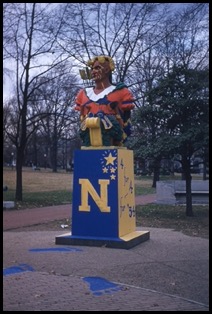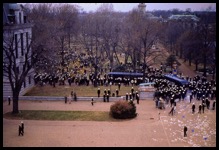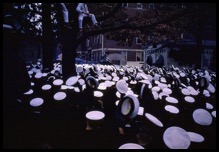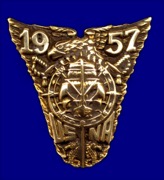
NOW HEAR THIS!!
This page provides useful information that is transitory in nature. It will be revised from time-to-time as the Class, National, and World Situation dictates. Suggestions/recommendations for items to be posted should be sent to the Class Webmeister. Contributions are both sought and welcome.
This page last up-dated on 6/26/2025.
Next Generation USID Card for Retirees, Spouses, & Dependents
Military retirees are required to update their Uniformed Services Identification (USID) cards to the new Next Generation USID card by December 31, 2025. The paper-based USID cards with indefinite expiration dates will no longer be accepted after this date. The new cards are more secure and durable, incorporating features like plastic cardstock and enhanced security measures.
According to the DoD Common Access Card website, USID cards are issued to retired military and Reserve members, dependent family members of uniformed Service members, and other eligible individuals in accordance with DoD policy. It's important for military retirees/dependents/surviving spouses to know these old forms of ID will not be valid to access a military installation, and you will need issuance of the NextGen ID card. This will be true even if your old ID card has an INDEF expiration date on it - the ID will still be invalid. The deadline is 31 December 2025.
Based on this, we strongly encourage everyone with an old-style ID card to get a NextGen ID card now!
There are several ways to make an appointment to get a new ID card. (1). You can visit the RAPIDS ID Card Office Locator website to find the closest office and either call them to make an appointment or (2). schedule your own appointment using the website. https://idco.dmdc.osd.mil/idco/ To make an appointment using this site select the “ID Card Office Locator & Appointments” block. - do it now!
Doctor Tyler Pitroff’s New Book
Another of our Class of 57 Teaching and Research Fellows, Dr. Tyler Pitroff, has won a prestigious award for the book he wrote as part of his 57 Fellowship at the Academy from 2020 to 2022..
The John Lyman Book Awards are given annually by the North American Society for Oceanic History to recognise excellence in published books making a major contribution to the study and understanding of maritime and naval history. They are named after Professor John Lyman (1915–1977) of the University of North Carolina.
Maritime and Naval Science, Technology, and the Environment
Winner 2024
Tyler A. Pitrof, Too Far on a Whim: The Limits of High-Steam Propulsion in the US Navy (University of Alabama Press, 2024).
Congratulations, Tyler! You do us proud!
USNA Columbarium Reaches Capacity
USNA AA&F Announces Expansion Plans and Fundraising Effort - 1 May 2025
The U.S. Naval Academy Columbarium - a popular and honored final resting place for USNA graduates and their spouses since its opening in 1987 – is now out of available niches.
USNA AA&F, in close partnership with the Naval Academy, is actively working on plans to expand the Columbarium. The expansion project aims to ensure that alumni who wish to be inurned at the Academy will have the opportunity to do so.
The immediate plan, thanks to lead philanthropic support from the Class of 1975, involves the construction of a new 650 niche wall at the top of the hill, overlooking College Creek. The design for this expansion is complete; however, the project requires $1.8 million in additional philanthropic support to move forward.
USNA AA&F is seeking other supporters to follow ‘75’s lead and consider contributing to this vital project.
"We need to raise the necessary funds to ensure that all our alumni have a dignified resting place," said AA&F Executive Director of Memorial Services, Wes Huey ‘87. "This is how we alumni take care of each other until that final bell, and we are committed to reaching our goal with the support of our community."
In addition to the immediate expansion, the AA&F and USNA staff are also planning for future phases of the Columbarium's growth. Options are being explored now, and designs will be developed for those future expansions.
“Memorial services at USNA for our alumni is an example of the partnership and synergy between the Yard and the AA&F,” said Huey, who has directed Memorial Services at the AA&F since 2023. “While the Naval Academy staff operates the Columbarium, it is the generosity of our alumni that provides for these places of final rest.”
The original Columbarium completed in 1987 was principally sponsored by the Alumni Association, including a major grant from the George and Carol Olmsted Foundation in memory of Jerauld L. Olmsted, Class of 1922. The Class of 1959 sponsored an oratory and upgrades to the Columbarium in 2004.
The Naval Academy Foundation has set up a general fund for the Columbarium expansion and is reaching out to classes to garner support.
In the interim, USNA will implement a waiting list for deceased alumni who expressed wishes to be inurned in the new annex of the Columbarium. The process for signing up for the waiting list is the same as for scheduling a Columbarium service – notify the Memorial Affairs team on the Yard when the qualified alumni or alumni spouse has passed away.
While awaiting the opening of the new annex, families are welcome to work with their local funeral homes for the arrangement of storage of remains or may choose to keep their loved ones’ remains at home.
For guidance and options on current services and bookings, please contact Joe Fagan ’89 & Chris Silva at
[email protected] or visit https://www.usna.edu/Cemetery/Arrangements.php.
1957 Participation in Vietnam
This is an update to the results of our Class Legacy Gift, The Class of 1957 Chair in Naval Heritage. Our twelfth Professor, Dr. David Winkler, taught an upper division course in Methodology of Oral History in the spring of 2020 during which time each of his 15 students interviewed one of our Classmates. These interviews were shared and, from them, his class created a book, “Voices of Vietnam”. Each chapter is written by one of the Midshipman students and describes a period of the conflict. Each Midshipman author dedicates his or her chapter to those of our classmates who died during the period of their chapter. These dedications are included in the book as well as a brief biography of each of the midshipman authors.
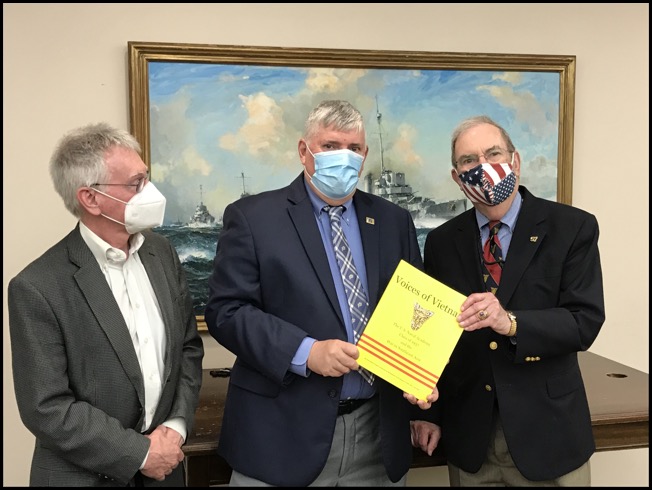
Here we see our own Veep, Dr. Winkler, Dr. McCarthy, and, of course, the book!!
Below is shown the collection of books published by the various Chair-Holders under the auspices of our Class with a brief description of each book.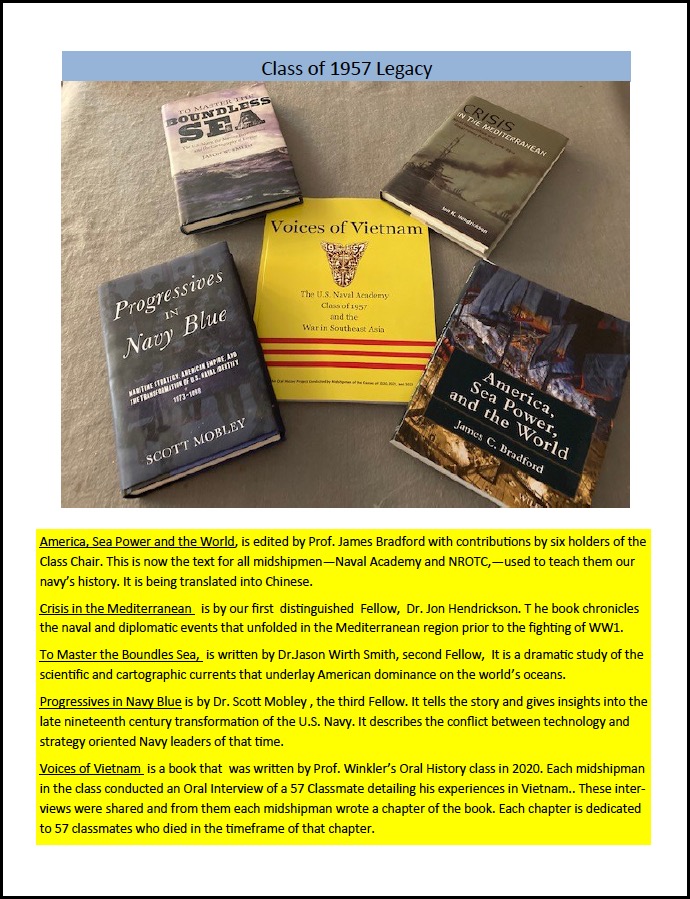
Class Zoom Meeting Capabilities
Class Vice President Bill Peerenboom has set up a Zoom account that can be used by any member of the USNA Class of 1957. The idea came from using Zoom meetings in place of the monthly Class luncheons in the Washington D.C. area. These meetings were then extended to include up to 100 members of the class.
Three of the annual Washington Chapter meetings include speakers of interest to the entire Class of 1957. The April and September luncheons relate to The Class of 1957 Chair in Naval Heritage and at least one month in the year includes members of the USNA 22nd Company which our class supports. Members of our Link Class of 2007 are also invited to join these meetings.
Jerry Smith presently assists the conduct of the Zoom meetings and has a list of Zoom participants who regularly receive the Zoom meeting info. If you would like to be added to the Zoom list please notify [email protected].
If you desire to host a Zoom meeting using the Class of 1957 Zoom account, contact Bill Peerenboom [email protected]
Acceptable meetings include your USNA Company, your family, your local friends, talk groups, etc.
Politics, commercial ventures, etc. are to be avoided.


